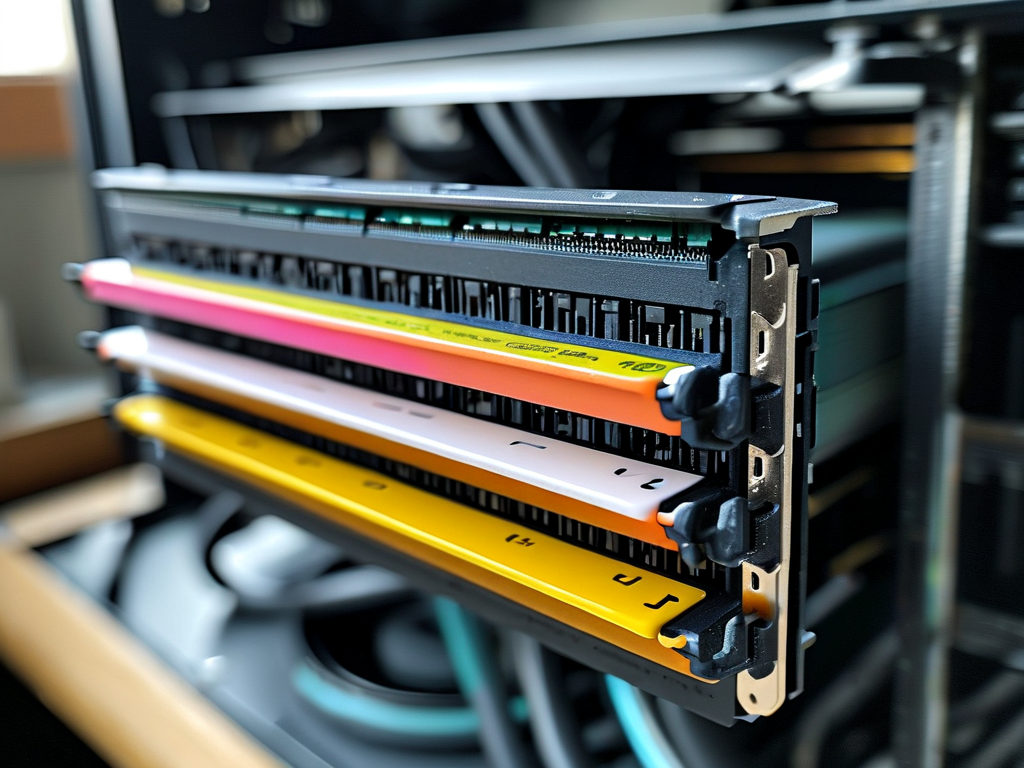Over the past ten years, advancements in computer memory technology have reshaped computing capabilities across industries. From consumer devices to enterprise servers, the evolution of RAM and storage solutions has become a cornerstone of modern digital transformation. This article explores measurable improvements in memory capacity, speed, and efficiency while analyzing their real-world implications.

Capacity: Breaking Storage Barriers
The most visible leap lies in memory capacity. In 2013, flagship smartphones typically shipped with 2GB RAM, while today's premium models boast 16GB – an 800% increase. Desktop computers have seen similar growth, with standard configurations jumping from 8GB DDR3 to 64GB DDR5 modules. This expansion enables simultaneous operation of memory-intensive applications like 3D rendering software and machine learning frameworks without performance degradation.
Server-grade systems demonstrate even more dramatic progress. Enterprise servers that once required multiple racks to achieve 1TB memory now achieve 12TB in single-node configurations through advanced LRDIMM (Load-Reduced Dual In-Line Memory Module) designs. Such capacity empowers hyperscale data centers to process complex AI workloads 40% faster than 2018 benchmarks.
Speed: From MHz to Effective Bandwidth
Clock speeds tell only part of the story. While DDR4-3200 (3.2GHz) represented the high end in 2015, DDR5-6400 modules now double that base frequency. More importantly, architectural improvements like dual 32-bit channels per module and on-die ECC (Error-Correcting Code) have boosted effective bandwidth by 150-180% compared to previous generations.
Latency metrics reveal nuanced progress. CAS (Column Address Strobe) latency for DDR4-3200 typically measured 22 cycles (13.75ns), while DDR5-6400 maintains CL36 (11.25ns) through refined prefetch algorithms. This 18% reduction in absolute latency enables faster data retrieval despite higher clock speeds.
Energy Efficiency: Powering Sustainable Computing
Modern memory technologies achieve more with less energy. DDR5 modules operate at 1.1V compared to DDR4's 1.2V baseline, reducing power consumption by 20% per module. Advanced power management features like programmable supply voltages and dynamic frequency scaling further optimize energy use.
Enterprise solutions take this further with innovations like Samsung's 14nm-class DDR5 chips, which reduce power consumption by 30% while doubling density compared to 20nm predecessors. These improvements prove critical for large-scale deployments where a 10% power reduction could save $3M annually in a 50MW data center.
Emerging Technologies: The Next Frontier
Three groundbreaking developments promise continued advancement:
- 3D Stacked DRAM: TSV (Through-Silicon Via) technology enables vertical memory integration, with prototypes achieving 512GB/s bandwidth in research environments.
- CXL (Compute Express Link): This open interconnect standard allows coherent memory sharing between CPUs and accelerators, reducing data copying overhead by up to 70%.
- Non-Volatile RAM: Intel's Optane Persistent Memory demonstrates hybrid solutions combining DRAM speed with SSD-like persistence, achieving 8x the endurance of traditional NAND flash.
Practical Implications
These technical advances translate to tangible benefits:
- Video editors can scrub 8K timelines with 3x fewer dropped frames
- Database query times reduced from 2.1s to 0.7s in TPC-H benchmarks
- Neural network training iterations accelerated by 40% through optimized memory parallelism
However, challenges remain. Thermal constraints in compact devices limit maximum clock speeds, while memory costs per GB have only decreased 60% over the decade – slower than historical trends.
The memory industry continues innovating to address these hurdles. Micron's 1β (1-beta) DRAM process node, entering production in late 2023, promises 15% better power efficiency and 35% higher density. Meanwhile, JEDEC's roadmap outlines DDR6 specifications targeting 12.8Gbps data rates by 2025.
As software demands escalate with AI proliferation and metaverse development, memory advancements will remain critical in sustaining Moore's Law-esque progress. The next decade may see terabyte-scale consumer RAM and nanosecond-level latency – but only through continued material science breakthroughs and architectural creativity.

